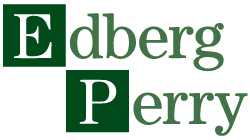Auto-enrollment and automatic contribution increases have proven to be popular and successful retirement plan design features that get more people to save for retirement. A little less known is “re-enrollment.” It’s another important tool we have to help encourage better participant outcomes. And it has the potential to benefit the participant, the plan sponsor, and you.
Just as auto-enrollment sweeps newly eligible employees into the plan unless they opt out, re-enrollment targets those who may have previously opted out or never participated. It forces them to take stock of their future and, consider again, the benefit of their workplace retirement plan.
A second use of this plan design feature is to realign participant portfolios to more age and risk or goal appropriate options. For example, some participants may have been defaulted into a strategy too conservative, or too aggressive, or poorly diversified, or that may have drifted over time from one better aligned with their current age and circumstances. And given industry reports about the high percentage of people who are not confident about their investment choices, it wouldn’t surprise you that many may have simply made poor decisions about their own allocations.
A re-enrollment event presents an opportunity to realign these participant portfolios to more age appropriate and risk or goal appropriate targets by mapping them to a target date or managed account QDIAs. Some participants, who have taken the time to develop their own investment strategy may prefer to opt out, but many who were opted into the plan and have been more passive, or who were never confident in their own choices, will benefit by the re-enrollment into the QDIA.
When a re-enrollment is scheduled, participants receive a notification that their existing balances as well as future contributions, will be defaulted to the plan’s QDIA as of a specified date, unless they choose to opt out. And industry stats show that just like with auto-enrollment, re-enrollment opt outs are low.
A QDIA introduces a professionally managed “do it for me” approach that automatically rebalances over time and considers the retirement path objectively, which is something most participants don’t do.
Re-enrollment benefits a plan sponsor in two ways. They enjoy the safe harbor protections for assets that are invested in the QDIA. And, by offering re-enrollment, along with other auto features, they create a better workplace experience for employees that translates to improved employee morale.
As a retirement plan advisor, you have a great opportunity to differentiate by educating and guiding plan sponsors to focus on plan performance and participant outcomes. Automatic plan design features including re-enrollment can change the dynamic of plan meetings from discussion around required metrics to actions that drive real success metrics. Let’s talk about how we can collaborate to produce better outcomes – together.



